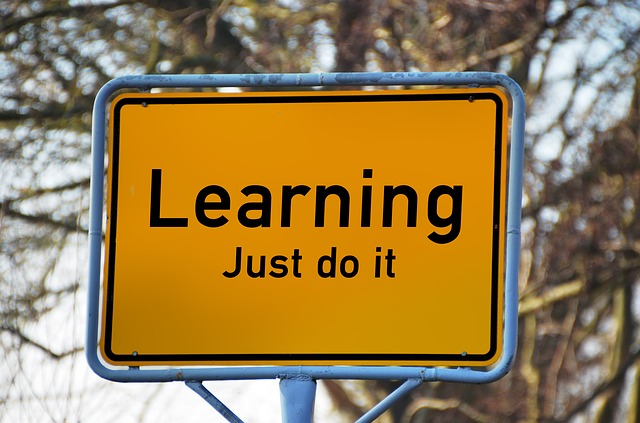how to become an sat tutor
When I started working as a professional tutor, I was fresh out of college with few qualifications other than high test scores and some volunteer experience. I struggled with tutoring my first few students—I didn't feel comfortable giving them assignments and I struggled to figure out how best to use our lesson time. But after years of tutoring, I became thoroughly familiar with the ins and outs of the whole process. I've drawn on my hard-earned knowledge to create this guide laying out the key steps to helping someone excel at the SAT so that you know where to start when tutoring your own student or child. A big part of being a great tutor is being properly prepared—these seven steps will set you on the right path to raising your student's score: Bonus: Looking for the very best guides to every SAT section? Check out our top guides for every single section of the SAT. Choose the score level you're aiming for: 800 Score Guides: SAT Reading | SAT Writing | SAT Math | SAT Essay Choose these guides if you're scoring a 600 or above on a section, and you want to get the highest SAT score possible. 600 Score Guides: SAT Reading | SAT Writing | SAT Math | SAT Essay Choose these guides if you're scoring below a 600 on a section, and you want to boost your score to at least a 600 level. These are the very best guides available on boosting your SAT score, section by section. They're written by Harvard grads and perfect SAT scorers. Don't disappoint yourself - read these guides and improve your score today. Before you get started with a student you need to make sure you're genuinely going to be able to help your student and determine if there will be any special challenges you'll face. Don't assume that because you're older than your student, you automatically know more about the test than she does. You probably took the SAT at least five years ago, while she took it a few months ago. If you want to be an effective tutor, you'll have to take the time to really understand the SAT (see the next step for more on how to do so). Think of it this way: you won't be able to explain why an answer is wrong to your student if you don't understand it yourself. Worse, you won't be able to figure out why your student is missing the question in the first place. A good rule of thumb is that you should be scoring at least 150 points higher than your student. If she's already high-scoring you'll want to be at or near perfect. One of the biggest challenges of tutoring is convincing your student to put in the work needed to improve. The single biggest key to raising standardized test scores is practice. Part of your job is convincing your student to put in the work to raise her score. If your student is struggling to motivate, try discussing the tangible benefits of a higher SAT score with her. Motivating your student can be especially challenging if you're working with a family member or friend. This kind of tutoring generally works best when the student is still quite young or is independently motivated and simply coming to you for extra help. As I mentioned above, in order to be a helpful tutor, you have to know the material you're tutoring: that means learning as much as you can about the SAT. Though it may not seem important, you should start by making sure that you understand the basics of the SAT: how long it is, how many questions it has, and what the different sections are. Keep in mind that the SAT has changed quite a bit over the past decade, so even if you think you know it well from taking it in high school, make sure to review the current version of the test. It's important to know exactly what your student can expect to see on the SAT. You need to have a solid grasp on both the different question formats and the material covered by the test—check out our guides to what's actually on each section of the test if you have questions. The SAT is very different from the kinds of tests students take in their classes. You'll need to help your student understand these differences and how to use them to her advantage. First of all, remember that the SAT is overwhelmingly a multiple-choice test: it doesn't matter how your student gets the right answer, just that she does. There are a lot of helpful strategies and shortcuts that can help students get to the answer more quickly. Another key point to remember is that SAT questions often include traps meant to trip up the test taker. Work with your student to help her practice reading questions carefully and resisting making assumptions about what she thinks a question should be asking. Finally, never forget that the SAT is standardized: no matter how there is only ever one right answer and it is indisputably correct. Make sure you can explain not just why an answer is correct but why the other choices are wrong. Once you feel prepared, it's time to get started with your student, which means you need to establish exactly what she's hoping to get out of tutoring. You'll need to ask her about her personal aims and the schools she's considering applying to so you can help her determine an appropriate score goal. It's easy to assume that you just want to get your student's score as high as possible, but it's better to have a specific score in mind. Not every student needs a 1600, and setting an achievable goal gives your student something concrete to work toward. What the goal score is will depend on what grade your student is in and what schools or programs she wants to apply to. Assuming your student is a junior or senior applying to colleges, you can use our method, which is based on the SAT scores colleges expect from applicants, to calculate a target. Keep in mind that your student may need to focus specifically on raising her score on one or two sections. A particularly low score on one section (especially math or reading) can count against an application, and some schools and programs have a cut off score for certain sections. Another consideration is whether schools superscore, i.e. count only the highest score on each section. If your student is only applying to schools that superscore and already has a solid score on one of the sections, she may want to focus primarily on the others. Before you get started with tutoring, you need to make sure you have high-quality practice materials to use with your student. When practice questions have errors or look nothing like the the questions on the actual SAT, students end up confused or frustrated and, even worse, lose some of their trust in you. Let's go through where you can find some of the most helpful resources for the SAT. The best practice materials are official ones, since practicing with real tests will give your student the best idea of what to expect on test day. You want to find and use as many of these as possible. Practicing with real SATs is the best way to learn the format and logic of the test, but your student may still need some extra help with strategies for the most effective ways to approach the different types of questions. The following resources can help you find the most effective strategies for your student to take. Another vital part of studying for the SAT is reviewing the content it tests. The following books and guides can help you review key concepts from each of the three sections with your student. Want to improve your SAT score by 160 points or more? We've put our best advice into a single guide. These are the 5 strategies you MUST be using to have a shot at improving your score. Download this free SAT guide now: As a tutor, one of your most important roles is making sure your student stays on track. Let's go over some ways you can help your student meet her goals by her test date. It's vital that you have a set schedule for tutoring. Without one, it's easy for students to procrastinate and fall behind. Start by determining when your student will take the test and then plan out how you're going to cover everything between now and then. Generally speaking, students should shoot for roughly 40 hours of prep, although that time will be split between tutoring and independent work. Try to set a specific time for your lesson each week. I prefer to meet with students once a week, but if you're on a tight schedule you can certainly do twice a week. With more than two lessons per week, most students will quickly get burned out and frustrated. Before you start, spend some time determining what your student needs the most help with. If she's taken the test before, take a look at her scores. Then, if possible, have her take a full practice test before you get started. Going over it together will help you see why she's missing questions and allow you to focus your efforts on the strategies and content review that will be most helpful for her. From there you can plan out what order you'll cover the material in. I usually start with a student's weakest areas and then work through everything until I get to her strongest, revisiting the early concepts occasionally to review. As I mentioned above, practice is key to improvement on the SAT. You'll need to give your student practice questions to do or content to review between lessons. Ideally, you'll also want to have them complete at least three full official practice SATs that simulate actual testing conditions. If you're a parent or sibling rather than a professional tutor, you probably won't be able to convince your student to do extra homework. Instead, try setting aside an extra time during the week for them to study on their own. When students sign up for tutoring, they often expect to learn tricks that help them instantly raise their scores. There aren't really any such simple tricks, but there are helpful strategies that, when used consistently, can make a big difference in students' scores. You may also need to provide content review for your student, depending on their strengths and weaknesses. The following resources offer ideas for specific strategies you can use with your student (most of which are also included in the more overall guides from the previous section). SAT questions follow certain patterns, and the best way to get a feel for the style of the questions is to do a lot of practice. As such, regularly practicing with real SAT questions is one of the most important part of studying for the test, and as a tutor you should assign a lot of official practice questions. However, it's not enough to simply give some practice passages to your student, you also need to carefully review the questions she misses. Don't stop at saying, "B is the right answer"— really dig in and help your student understand why she got the question wrong and how she can avoid missing similar ones in the future. This process is key to helping your student improve and why it's so important that you understand the test yourself. For more details on how to effectively go over missed questions, take a look at our guide to reviewing mistakes. The steps above offer a general outline to becoming an effective tutor: what exactly you cover and how you work on it will depend a lot on you and your student. Nonetheless, there are a few big picture ideas that every tutor should keep in mind. Your student will know if you're not invested in the tutoring process: don't try to bluff your way through with a vague recollection of taking the SAT in high school—it won't work. Take the time to familiarize yourself with the test and work up an individualized improvement plan for your student. The more you know about the test the better you'll be able to understand your student's unique needs and the more effective you'll be as a tutor. Students who don't put in the work don't improve—it's as simple as that. As such, a big part of your role as a tutor is to set expectations and encourage your student to study and practice. In some cases, motivating your student will be simple (I've had students who actually requested extra homework), but in others you will need to really emphasize why the practice is important and how it will help your student reach her goals. Always keep in mind that the SAT tests the same simple rules over and over again, just in slightly different ways. Really knowing the test will be your greatest asset as a tutor. Even if you're just starting out, and aren't that familiar with the test yet, you can use the fact that the SAT is standardized to your advantage. Go over official tests carefully and look for patterns in the questions. Remember that because the test is standardized there is only ever one indisputably correct answer. Help your student understand both what will and what won't be covered by the test. Are you not sure whether to prep your student for the PSAT and SAT at the same time? Read our complete explanation of the similarities and differences between the PSAT and SAT and which students should study for which tests. Maybe, given the changes to the SAT, your student is considering taking the ACT instead. Check out our take on the pros and cons of each test and our guide to tutoring the ACT. Finally, if your student needs help with other parts of the college application process , take a look at our guides to researching colleges, writing about extracurriculars, and crafting a personal statement.
Step 1: Identify Challenges
Make Sure You're Qualified
Motivating Your Student
Step 2: Study the Test
Learn the Format
Understand the SAT's Unique Logic
 Before you can be an effective teacher, you have to study up on the material yourself.
Before you can be an effective teacher, you have to study up on the material yourself. Step 3: Set Goals
Determining a Score Goal
Narrowing Your Focus (If Necessary)
Step 4: Gather Great Resources
Official Tests
General Strategies
Subject-Specific Materials
Reading
Math
Writing
Step 5: Lay Out a Plan
Set a Schedule
Analyze Weaknesses
Give Homework
 Good advice!
Good advice! Step 6: Teach the Big Picture
Reading
Math
Writing
Step 7: Analyze Mistakes
 ( Bro. Jeffrey Pioquinto, SJ /Flickr)
( Bro. Jeffrey Pioquinto, SJ /Flickr) Review: 3 Key Tutoring Tips
Be Prepared
Focus on Motivation
Remember that the SAT Is a Standardized Test
What's Next?

About the Author
Alex is an experienced tutor and writer. Over the past five years, she has worked with almost a hundred students and written about pop culture for a wide range of publications. She graduated with honors from University of Chicago, receiving a BA in English and Anthropology, and then went on to earn an MA at NYU in Cultural Reporting and Criticism. In high school, she was a National Merit Scholar, took 12 AP tests and scored 99 percentile scores on the SAT and ACT.
how to become an sat tutor
Source: https://blog.prepscholar.com/how-to-teach-the-sat-tips-for-tutors-and-parents
Posted by: sebringlour1993.blogspot.com

0 Response to "how to become an sat tutor"
Post a Comment